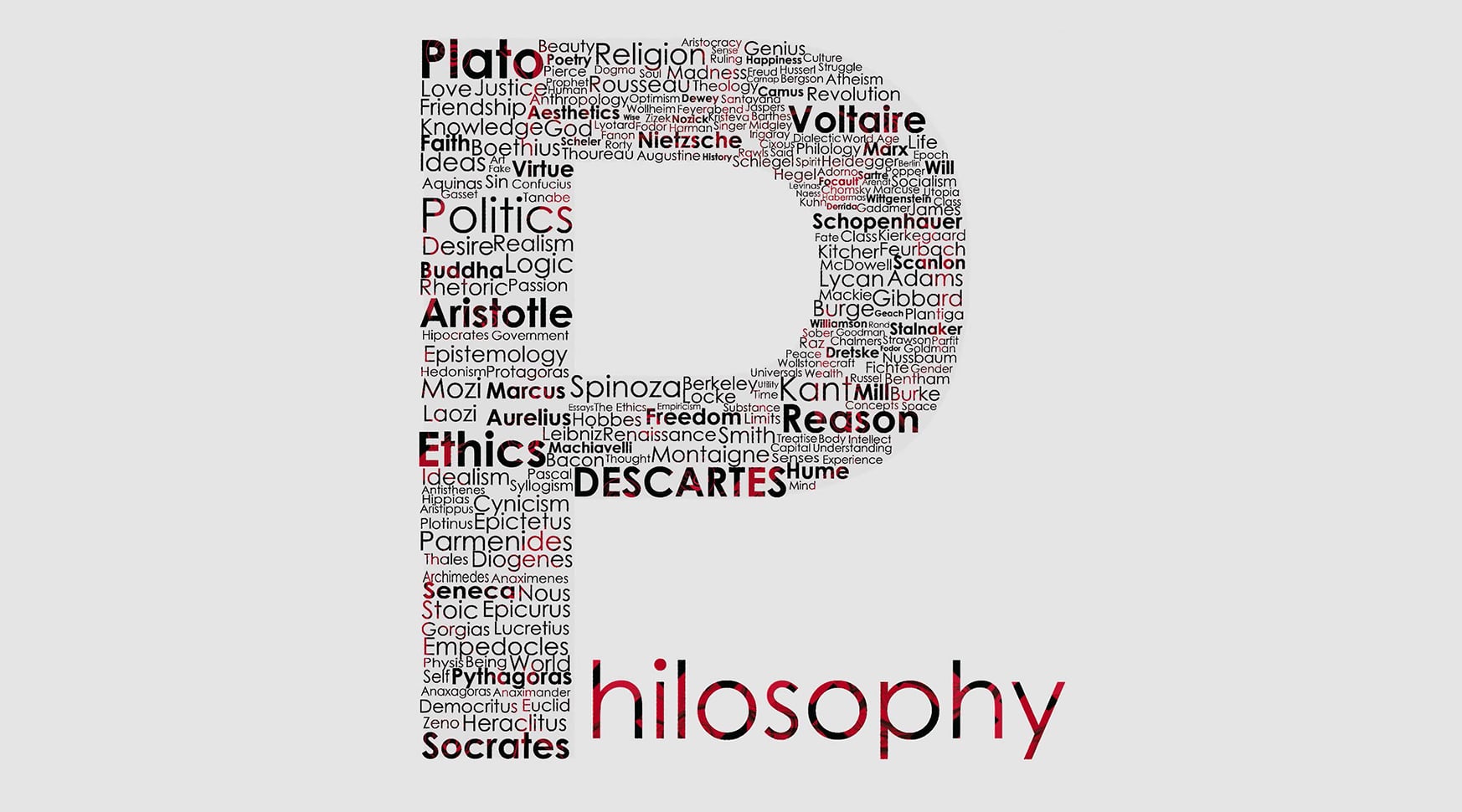Want to write a book review? Or are you searching for a book reviewer?
Writing a book review can be intimidating at times. This is because you have little to say or nothing to say.
Although writing a book review varies depending on the genre and plot, the basic structure remains the same.
You should also have some background questions before writing a book review. The questions include the relevance of the topic, the type of book, and the audience.
Another general consideration is to proofread your review. Having a review littered with grammatical mistakes tarnishes your image to the readers.
Let’s dig in to find out more about book reviews.
Table of contents
- What is a Book Review all About?
- What is the Format of a Book Review?
- What are the 4 Stages of Writing a Book Review?
- Questions to Consider While you want to Write a Book Review
- How Many Pages Should a Book Review Be?
- How Long Does it take to Write a Review Take?
- Practical Steps to Write a Book Review
- Common Mistakes in Writing a Book Review
- Pro Tips in Writing a Good Book Review
- Formats of Book Reviews
- 1. The New York Times reviews Lisa Halliday’s Asymmetry:
- 2. Emily W. Thompson reviews Michael Doane’s The Crossing on Reedsy Discovery:
- 3. The Book Smugglers review Anissa Gray’s The Care and Feeding of Ravenously Hungry Girls:
- 4. The Book Hookup reviews Angie Thomas’ The Hate U Give:
- 5. The New York Times reviews Melissa Albert’s The Hazel Wood:
- 6. James reviews Margaret Wise Brown’s Goodnight, Moon on Goodreads:
- 7. Publishers Weekly reviews Elizabeth Lilly’s Geraldine:
- Parting Short
- FAQs on Book Reviews
- References
- Recommendation
What is a Book Review all About?
A book review examines the main theme of the book, its strength, and weaknesses.
Summarize the book by writing about its main themes and why they are important.
Secondly, research the background of the book by comparing the book with other books on the same topic. Compare the author’s stance to the other authors’ perspective.
Thirdly, research the author’s credentials in writing the book. Lastly, assess the book’s strengths and weaknesses by analyzing its objectives. You can also include your personal opinion on whether you like or dislike the book but be clear by providing reasons.
Read: 21 Best QuickBooks Online Classes for Beginners
What is the Format of a Book Review?
This is the format to follow through when you want to write a book review.
1. Introduction
Introduce the book in less than 2 paragraphs. An introduction is like a roadmap to a reader. It helps them shift their focus to your analysis. It should connect with the readers.
Writing a masterpiece introduction include:
- Using an interesting example.
- A shocking statement that is related to your argument.
- A pensive question.
Begin by answering, “What is the relevance of the topic to the audience?”
- Introduce the book’s full title, place of publication, publisher, date, edition, and its cost.
- State the motivation of the book which includes the writer’s main points and thesis.
- Lastly, state the purpose of your review.
2. Thesis
Different types of thesis statements depend upon the purpose of your thesis. The motives include comparing a book to different themes or examining its contribution. However, avoid stale and dull thesis statements like, “This book is interesting.”
A thesis should reflect on the unique aspects and viewpoints of the book.
3. Body
It should include:
- A summary.
- Different subjects the author highlights.
- Strengths and weaknesses of the book.
- Substantiating your claim.
4. Conclusion
Do you feel that the book is significant?
Will it be useful to its field?
You need to make a well-balanced analysis of your book review. Use both the strengths and weaknesses of the book to make it more informative. Don’t introduce new information but you can make recommendations that enrich the thesis.
What are the 4 Stages of Writing a Book Review?
These are the stages of how to write a book review.
Firstly, actively read the book and reflect upon it. Don’t just merely take notes on the book’s characters, events, and motives.
Purposefully read with the aim of understanding the underlying message, comprehending the author’s language, and the literary styles used.
Secondly, zoom out after reading the book because you need to internalize the ideas. Sleeping on the idea allows you to get some fresh perspective and widens your thinking. Eventually, your writing is clearer.
Thirdly write your review which includes an introduction and a conclusion. However, you can skip the introduction and conclusion if the review is quite short. Tackle one theme at a time and expand on it.
Lastly, proofread and rewrite your work. Edit your work to the proper structure and flow you want it to be. Again, take some time off from reviewing the book to have more consciousness of your work.
The topic sentence should contain the most important information. It should lure the reader to read on. Also, delete any sentences that sound dull and stale.
Questions to Consider While you want to Write a Book Review
- What is the book’s argument?
- Does the book deliver on its promise?
- What are the contributions of the book to your field or discipline?
- Does the book touch on a current trend in the field?
- Which audience does the book relate to?
How Many Pages Should a Book Review Be?
A book review should be about 600-2000 words. The best length with most people is 1000. The 1000-word count helps you focus on the essential elements without digressing into extraneous details.
For example, writing a 20-page academic review is inadvisable because the main focus should be on the essay.
Read: Top 10 Best Agatha Christie’s Books Everyone Should Read | Reviews
How Long Does it take to Write a Review Take?
Writing a review should take 1-2 weeks.
Practical Steps to Write a Book Review
Step 1: Draw an Outline
Include the key points your will be evaluating. The Data includes characters, plot details, and other important points.
Step 2: Create a Hook
It indicate the author’s name and title of the book. Also, refer to the book’s bibliography.
Step 3: Body
Include a keynote section or chapter to summarize. Rewrite each quote in a short version. Each quote should be in its own paragraphs. Write your own analysis and interpretation of the quote.
Step 4: Conclusion and Star Rating
A star rating makes the book more effective. Star rating alludes to the quality of the book.
Common Mistakes in Writing a Book Review
Firstly, failing to evaluate the book. The background questions you have while reading the book help in assessing the quality of the book.
Secondly, reviewing everything in the book. The review should focus on the book’s main argument or your argument.
Thirdly, center on your intentions and not the books. Do not examine the book based on your expectations.
Fourthly, heavily criticizing the gaps and the bibliography. A review is not a chance to impress the readers. Avoid focusing on the missing bibliography or gaps. It’s being secretly showy.
A writer is limited to 200 to 500 pages. Therefore, they can’t address everything in-depth. If a book is on a specific topic but fails to address one of its subtopics, pinpoint this. Just don’t dwell on it.
Lastly, writing the exact quote. When using long quotes, paraphrase them or opt for short quotes.
Pro Tips in Writing a Good Book Review
- If you have a choice, always use fiction for a review. They are easier to review.
- Avoid likening the book to previous novels you have read. This confuses the reader.
- Use templates when researching to get more clarity.
- While you are to include your own analysis, avoid digressing to your expectations rather than what is in the book.
Formats of Book Reviews
These are some of the book reviews written by different people.
1. The New York Times reviews Lisa Halliday’s Asymmetry:
Three-quarters of the way through Lisa Halliday’s debut novel, “Asymmetry,” a British foreign correspondent named Alistair is spending Christmas on a compound outside of Baghdad.
His fellow revelers include cameramen, defense contractors, United Nations employees, and aid workers. Someone’s mother has FedExed a HoneyBaked ham from Maine; people are smoking by the swimming pool.
It is 2003, just days after Saddam Hussein’s capture, and though the mood is optimistic, Alistair is worrying aloud about the ethics of his chosen profession, wondering if reporting on violence doesn’t indirectly abet violence and questioning why he’d rather be in a combat zone than reading a picture book to his son.
But every time he returns to London, he begins to “spin out.” He can’t go home. “You observe what people do with their freedom — what they don’t do — and it’s impossible not to judge them for it,” he says.
The line, embedded unceremoniously in the middle of a page-long paragraph, doubles, like so many others in “Asymmetry,” as literary criticism.
Halliday’s novel is so strange and startlingly smart that its mere existence seems like commentary on the state of fiction.
One finishes “Asymmetry” for the first or second (or like this reader, third) time and is left wondering what other writers are not doing with their freedom — and, like Alistair, judging them for it.
Despite its title, “Asymmetry” comprises two seemingly unrelated sections of equal length, appended by a slim and quietly shocking coda.
Halliday’s prose is clean and lean, almost reportorial in the style of W. G. Sebald, and like the murmurings of a shy person at a cocktail party, often comic only in single clauses. It’s the first novel that reads like the work of an author who has published many books over many years.
2. Emily W. Thompson reviews Michael Doane’s The Crossing on Reedsy Discovery:
In Doane’s debut novel, a young man embarks on a journey of self-discovery with surprising results.
An unnamed protagonist (The Narrator) is dealing with heartbreak. His love, determined to see the world, sets out for Portland, Oregon. But he’s a small-town boy who hasn’t traveled much.
So, the Narrator mourns her loss and hides from life, throwing himself into rehabbing an old motorcycle. Until one day, he takes a leap; he packs his bike and a few belongings and heads out to find the Girl.
Following in the footsteps of Jack Kerouac and William Least Heat-Moon, Doane offers a coming of age story about a man finding himself on the backroads of America.
Doane’s a gifted writer with fluid prose and insightful observations, using The Narrator’s personal interactions to illuminate the diversity of the United States.
The Narrator initially sticks to the highways, trying to make it to the West Coast as quickly as possible. But a hitchhiker named Duke convinces him to get off the beaten path and enjoy the ride. “There’s not a place that’s like any other,” [39] Dukes contends, and The Narrator realizes he’s right.
Suddenly, the trip is about the journey, not just the destination. The Narrator ditches his truck and traverses the deserts and mountains on his bike. He destroys his phone, cutting off ties with his past and living only in the moment.
As he crosses the country, The Narrator connects with several unique personalities whose experiences and views deeply impact his own. Duke, the complicated cowboy, and drifter, opens The Narrator’s eyes to a larger world.
Zooey, the waitress in Colorado who opens his heart and reminds him that love can be found in this big world. And Rosie, The Narrator’s sweet landlady in Portland, helps piece him back together both physically and emotionally.
This supporting cast of characters is excellent. Duke, in particular, is wonderfully nuanced and complicated. He’s a throwback to another time, a man without a cell phone who reads Sartre and sleeps under the stars. Yet he’s also a grifter with a “love ‘em and leave ‘em” attitude that harms those around him. It’s fascinating to watch The Narrator wrestle with Duke’s behavior, trying to determine which to model and which to discard.
Doane creates a relatable protagonist in The Narrator, whose personal growth doesn’t erase his faults. His willingness to hit the road with few resources is admirable, and he’s prescient enough to recognize the jealousy of those who cannot or will not take the leap.
His encounters with new foods, places, and people broaden his horizons. Yet his immaturity and selfishness persist. He tells Rosie she’s been a good mother to him but chooses to ignore the continuing concern from his own parents as he effectively disappears from his old life.
Despite his flaws, it’s a pleasure to accompany The Narrator on his physical and emotional journey. The unexpected ending is a fitting denouement to an epic and memorable road trip.
3. The Book Smugglers review Anissa Gray’s The Care and Feeding of Ravenously Hungry Girls:
I am still dipping my toes into the literal fiction pool, finding what works for me and what doesn’t. Books like The Care and Feeding of Ravenously Hungry Girls by Anissa Gray are definitely my cup of tea.
Althea and Proctor Cochran had been pillars of their economically disadvantaged community for years – with their local restaurant/small market and their charity drives. Until they are found guilty of fraud for stealing and keeping most of the money they raised and sent to jail.
Now disgraced, their entire family is suffering the consequences, especially their twin teenage daughters Baby Vi and Kim.
To complicate matters even more: Kim was actually the one to call the police on her parents after yet another fight with her mother.
4. The Book Hookup reviews Angie Thomas’ The Hate U Give:
♥ Quick Thoughts and Rating: 5 stars! I can’t imagine how challenging it would be to tackle the voice of a movement like Black Lives Matter, but I do know that Thomas did it with finesse only a talented author like herself possibly could.
With an unapologetically realistic delivery packed with emotion, The Hate U Give is a crucially important portrayal of the difficulties minorities face in our country every single day.
I have no doubt that this book will be met with resistance by some (possibly many) and slapped with a “controversial” label, but if you’ve ever wondered what it was like to walk in a POC’s shoes, then I feel like this is an unflinchingly honest place to start.
In Angie Thomas’s debut novel, Starr Carter bursts onto the YA scene with both heart-wrecking and heartwarming sincerity. This author is definitely one to watch.
♥ Review: The hype around this book has been unquestionable and, admittedly, that made me both eager to get my hands on it and terrified to read it.
I mean, what if I was to be the one person that didn’t love it as much as others? (That seems silly now because of how truly mesmerizing THUG was in the most heartbreakingly realistic way.)
However, with the relevancy of its summary in regards to the unjust predicaments POC currently face in the US, I knew this one was a must-read, so I was ready to set my fears aside and dive in.
That said, I had an altogether more personal, ulterior motive for wanting to read this book.
Read: Best Science Fiction Books For Students
5. The New York Times reviews Melissa Albert’s The Hazel Wood:
Alice Crewe (the last name she’s chosen for herself) is a fairy tale legacy: the granddaughter of Althea Proserpine, author of a collection of dark-as-night fairy tales called “Tales From the Hinterland.”
The book has a cult following, and though Alice has never met her grandmother, she’s learned a little about her through internet research. She hasn’t read the stories, because her mother, Ella Proserpine, forbids it.
Alice and Ella have moved from place to place in an attempt to avoid the “bad luck” that seems to follow them. Weird things have happened.
As a child, Alice was kidnapped by a man who took her on a road trip to find her grandmother; he was stopped by the police before they did so. When at 17 she sees that man again, unchanged despite the years, Alice panics.
Then Ella goes missing, and Alice turns to Ellery Finch, a schoolmate who’s an Althea Proserpine superfan, for help in tracking down her mother.
Not only has Finch read every fairy tale in the collection, but handily, he remembers them, sharing them with Alice as they journey to the mysterious Hazel Wood, the estate of her now-dead grandmother, where they hope to find Ella.
“The Hazel Wood” starts out strange and gets stranger, in the best way possible. (The fairy stories Finch relays, which Albert includes as their own chapters, are as creepy and evocative as you’d hope).
Albert seamlessly combines contemporary realism with fantasy, blurring the edges in a way that highlights that place where stories and real-life convene, where magic contains truth and the world as it appears is false, where just about anything can happen, particularly in the pages of a very good book. It’s a captivating debut.
6. James reviews Margaret Wise Brown’s Goodnight, Moon on Goodreads:
Goodnight Moon by Margaret Wise Brown is one of the books that followers of my blog voted as a must-read for our Children’s Book August 2018 Readathon.
This picture book was such a delight. I hadn’t remembered reading it when I was a child, but it might have been read to me… either way, it was like a whole new experience! It’s always so difficult to convince a child to fall asleep at night.
I don’t have kids, but I do have a 5-month-old puppy who whines for 5 minutes every night when he goes in his cage/crate (hopefully he’ll be fully housebroken soon so he can roam around when he wants). I can only imagine! Also, I babysat a lot as a teenager and I have tons of younger cousins, nieces, and nephews, so I’ve been through it before, too. This was a believable experience, and it really helps show kids how to relax and just let go when it’s time to sleep.
The bunnies are adorable. The rhymes are exquisite. I found it pretty fun, but possibly a little dated given many of those things aren’t normal routines anymore. But the lessons to take from it are still powerful. Loved it! I want to sample some more books by this fine author and her illustrators.
7. Publishers Weekly reviews Elizabeth Lilly’s Geraldine:
This funny, thoroughly accomplished debut opens with two words: “I’m moving.” They’re spoken by the title character while she swoons across her family’s ottoman, and because Geraldine is a giraffe, her full-on melancholy mode is quite a spectacle.
But while Geraldine may be a drama queen (even her mother says so), it won’t take readers long to warm up to her. The move takes Geraldine from Giraffe City, where everyone is like her, to a new school, where everyone else is human.
Suddenly, the former extrovert becomes “That Giraffe Girl,” and all she wants to do is hide, which is pretty much impossible. “Even my voice tries to hide,” she says, in the book’s most poignant moment. “It’s gotten quiet and whispery.” Then she meets Cassie, who, though human, is also an outlier (“I’m that girl who wears glasses and likes MATH and always organizes her food”), and things begin to look up.
Lilly’s watercolor-and-ink drawings are as vividly comic and emotionally astute as her writing; just when readers think there are no more ways for Geraldine to contort her long neck, this highly promising talent comes up with something new.
Parting Short
Firstly, to write a book review, give an appraisal of the patent shortcomings in the book. Don’t criticize what you think the book should have been.
Secondly, set the tone in the review. Use precise language.
Thirdly, when challenging the author’s opinion, use facts and references. This covers your ass with proof. Therefore, holding you as objective.
Lastly, try to be neutral. Writing heavy doses of negative criticism sets you as biased.
FAQs on Book Reviews
Companies look for diversity when it comes to book reviews. Diversity includes newbies, eminent critics, different political opinions, novelty, and writers who understand the book in detail.
The primary goal in writing a review is to inform the reader. Reviews help the reads know noteworthy books.
There should be no conflict of interest between the reviewer and the author. Conflict of interest derails reviewers from being objective.
Every review has some subjective tone. This is because the writers have a unique outlook on the book. Therefore, the most important aspect to consider is the reviewer’s honesty.
Scrutiny should be your main point from the book, the book’s strengths, and its weaknesses.
No. A company often tries to look for a reader who is enthused with the book. A reviewer who hates a book openly is advised to be open about it.





